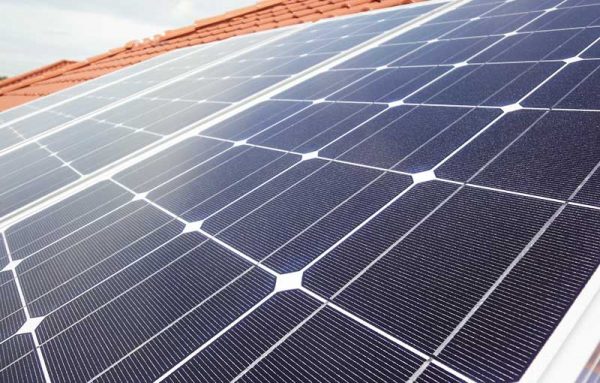An Unbiased View of Best Solar Panels
Wiki Article
Rumored Buzz on Best Solar Panels
Table of ContentsThe Main Principles Of Best Solar Panels Best Solar Panels Things To Know Before You Get ThisFacts About Best Solar Panels UncoveredThe Basic Principles Of Best Solar Panels Best Solar Panels Fundamentals ExplainedThe 7-Minute Rule for Best Solar Panels
Secret takeaways There are 3 different kinds of solar panels: monocrystalline, polycrystalline, and slim film (Best solar panels). Monocrystalline solar panels are extremely efficient as well as have a streamlined style, yet come at a higher rate point than other solar panels. Polycrystalline solar panels are less expensive than monocrystalline panels, nonetheless, they are less efficient as well as aren't as cosmetically pleasing.
Because polycrystalline cells consist of multiple silicon cells, the electrons can not relocate as conveniently and also consequently, reduce the effectiveness of the panel. The reduced effectiveness of polycrystalline panels also suggests they have a tendency to have a lower power outcome than monocrystalline panels, typically ranging in between 240 watts as well as 300 watts.
Not known Facts About Best Solar Panels


The temperature level coefficient tells you just how a lot the power result will lower by for every 1 * C over 25 * C the panel obtains. The typical temperature level coefficient for mono and polycrystalline panels usually falls someplace between -0.
As a matter of fact, with some thin film panels, it's difficult to even see the specific cells within the panel. They additionally often tend to have much less wiring and busbars, suggesting there's much less white area. Due to the fact that they are so inefficient, you would require to cover your whole roof covering in slim film panels - which might or might not be your style.
Some Ideas on Best Solar Panels You Need To Know
Yet, the way monocrystalline solar cells are designed causes there to be a fair bit of white area on the panel. Some makers have worked around this with black packaging or forming the cells in different ways, yet these visual adjustments can impact both the price and also efficiency of the see here now panels. Overall, monocrystalline panels still look sleek, but they're a little bit extra pronounced than thin film panels.
We do not advise slim film photovoltaic panels for household installations - their efficiency and also toughness do not make the inexpensive worth it, and it's not likely you'll have virtually adequate room to mount the variety of slim movie panels you would certainly need to cover your home electrical power usage. Elements to think about besides photovoltaic panel type There are 2 things we right here at Solar, Reviews believe are more vital than solar PV cell type when choosing panels for your home: imp source the brand name of photovoltaic panels as well as discovering the appropriate solar installer (Best solar panels).
A solar panel system will be on your roofing for at the very least 25 years, so you need an installer you can trust for two-plus years!
The Ultimate Guide To Best Solar Panels
Considering that they are made from pure silicon, they can be conveniently determined by their dark black color. Making use of pure silicon also makes monocrystalline panels one of the most space-efficient and also longest-lasting amongst all 3 photovoltaic panel kinds. This comes at an expense a great deal of silicon is lost to generate one monocrystalline cell, occasionally getting to over 50%.Polycrystalline solar panels As the name suggests, these come from various silicon crystals as opposed to one. The silicon pieces are thawed as well as put right into a square mold and mildew. This makes polycrystalline cells far more inexpensive given that there is little wastefulness, and also gives them that particular square shape. This likewise makes them less effective in terms of energy conversion and space, because their silicon purity and construction are lower than monocrystalline panels.
Each panel does not require a framework support, making them lighter and simpler to mount. Unlike crystalline silicon panels that can be found in standardized dimensions of 60, 72, as well as 96-cell counts, helpful hints thin-film panels can come in various dimensions to match particular demands. They are less effective than regular silicon solar panels.
Best Solar Panels Can Be Fun For Anyone
Unlike mono-and polycrystalline solar cells, the silicon is not structured on the molecular degree. On average, an a-Si cell calls for just a portion of the silicon required to generate normal silicon cells. This permits them to have the most affordable manufacturing cost, at the cost of effectiveness. This is why a-Si panels are matched for applications that call for extremely little power, such as pocket calculators.The combination of these elements results in the greatest performance amongst thin-panel types, though still not as efficient as crystalline silicon panels. Monocrystalline panels have an efficiency score over 20%.
50 $0. 50 $0. 50 Note that these figures don't consist of the cost of setup as well as labor.
Examine This Report on Best Solar Panels
This loss of outcome is reflected through the temperature level coefficient, which is a step of the panel's reduction in power result for every 1C rise over 25C (77F). Monocrystalline and also polycrystalline panels have a temperature level coefficient between -0. 3%/ C to -0. 5%/ C, while thin-film panels are closer to -0.Report this wiki page